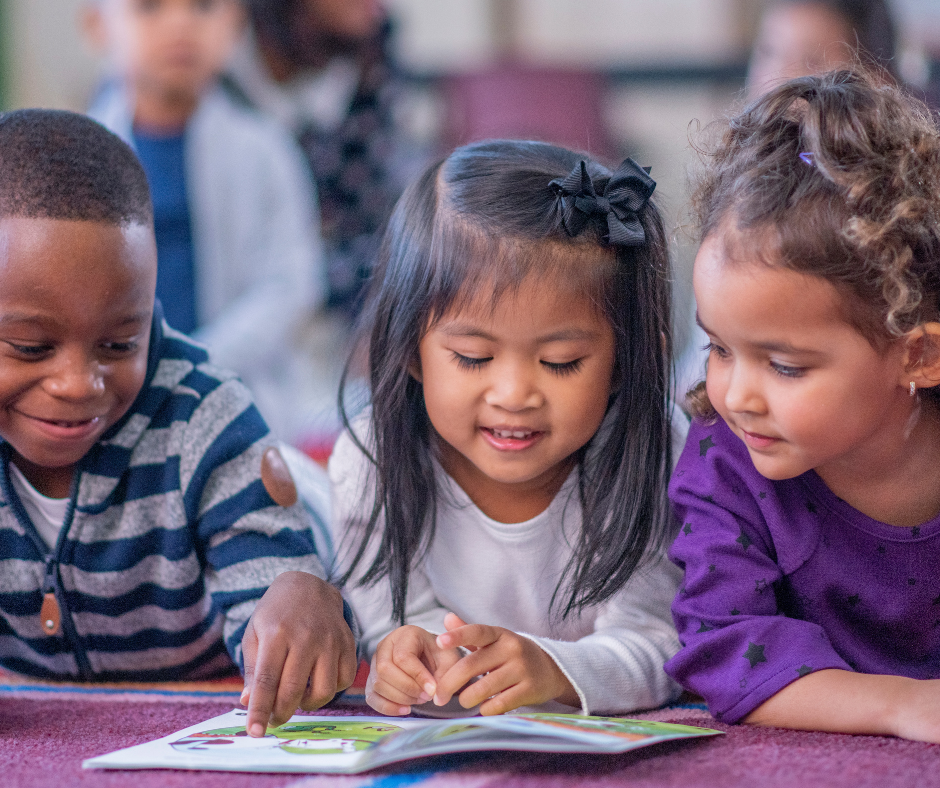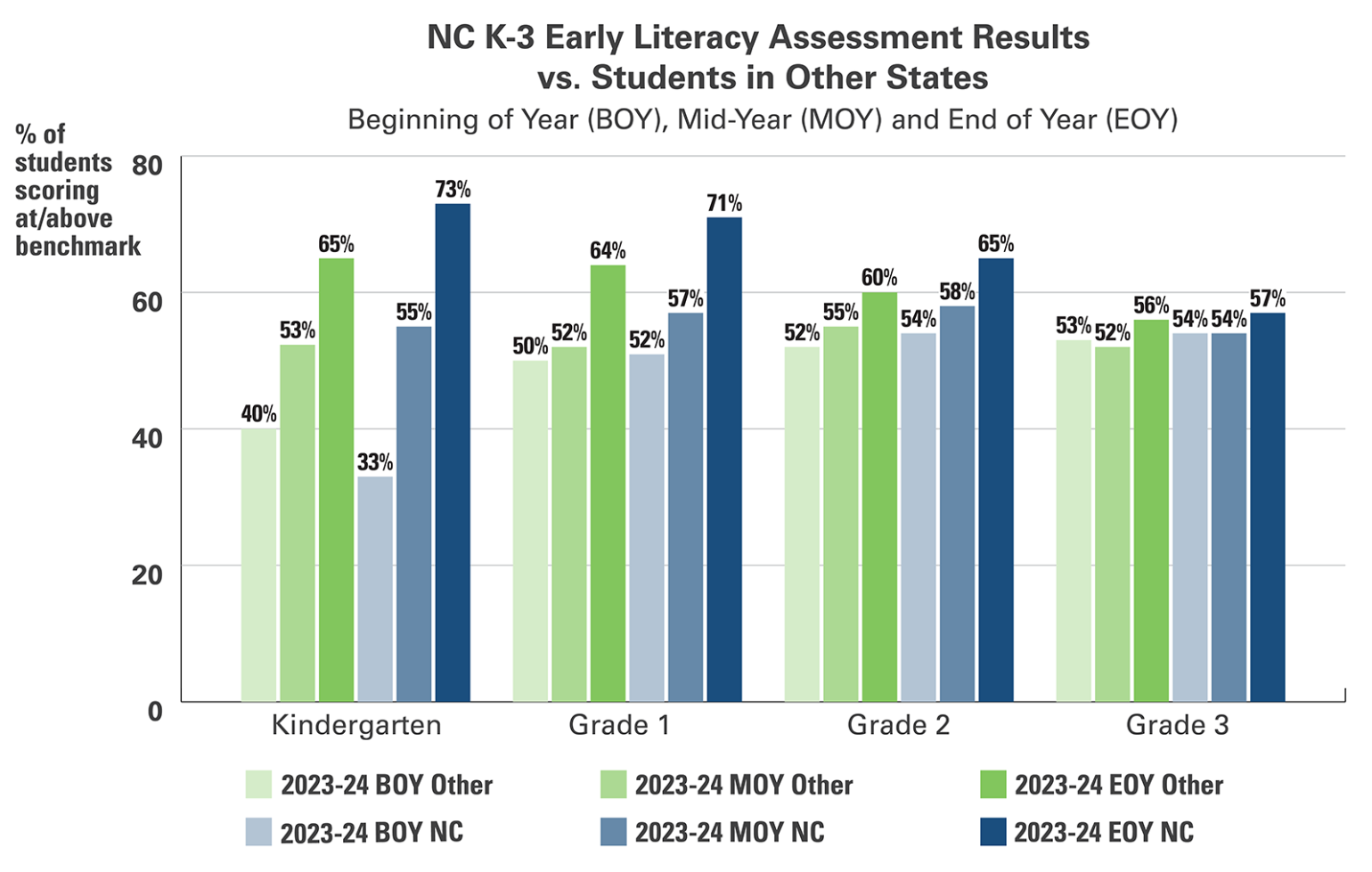Once Again, NC’s K-3 Students Outperform National Average on Reading Skills Assessment
For the third year in a row, North Carolina’s kindergarten through third grade students outperformed the national average on end-of-year literacy assessments, according to data presented to the State Board of Education today.
The number of students who met or exceeded the benchmark for the DIBELS 8 (Dynamic Indicators of Basic Early Literacy Skills) assessment grew by 81,616 from the beginning of the 2023-24 school year to the end. Meanwhile, 53,808 fewer students scored well below benchmark.

At every grade level tested, a higher percentage of North Carolina students measured as “on track” than the national average. K-2 students also showed greater improvement from beginning- to end-of-year assessments, while third graders improved at the same rates as their peers.
State Superintendent Catherine Truitt credits this success to the North Carolina Department of Public Instruction (NCDPI)’s statewide implementation of Language Essentials for Teachers of Reading and Spelling, or LETRS®.
The two-year professional development program for K-3 teachers rolled out in the 2021-22 academic year, with the final cohort of educators completing their training this June. LETRS equips teachers with instructional tools based on decades of research into the science of reading.
“They call it the ‘science’ of reading because, like any scientific concept, these methods are grounded in research and data. When we implemented LETRS, we knew we’d see results,” Truitt said. “But to have so many students improve this early in our state’s new literacy journey is a wonderful surprise. It speaks to the dedication of our teachers and the efficacy of the professional development coordinated by NCDPI’s Office of Early Learning.”

The DIBELS 8 assessment has been administered to kindergarten, first, second and third graders statewide beginning the same year as the LETRS training. It consists of a set of measures designed to evaluate component skills involved in reading and is taken at the beginning, middle and end of each year to track a student’s progress toward literacy.
The greatest gains in North Carolina’s scores can be seen in kindergarten, where the percent of students who are on track in reading grew by 40 percent during the 2023-24 school year, compared to an average of 25 percent for other states.
Amy Rhyne, senior director of NCDPI’s Office of Early Learning, said reading skills are like building blocks, with each grade building upon what was learned in years past. This is one factor that accounts for the differences in achievement between grade levels.
“This year’s third graders were already in first grade by the time the original cohort of teachers began LETRS, so it makes sense that they’re not experiencing as much growth as the K-2 students who were exposed to the science of reading earlier,” she said. “Now that all of our students will enter kindergarten with a teacher who has completed LETRS training, they’ll be able to build a really strong foundation. We expect to see that reflected in even greater achievement for our students in years to come.”
Source: North Carolina Department of Public Instruction